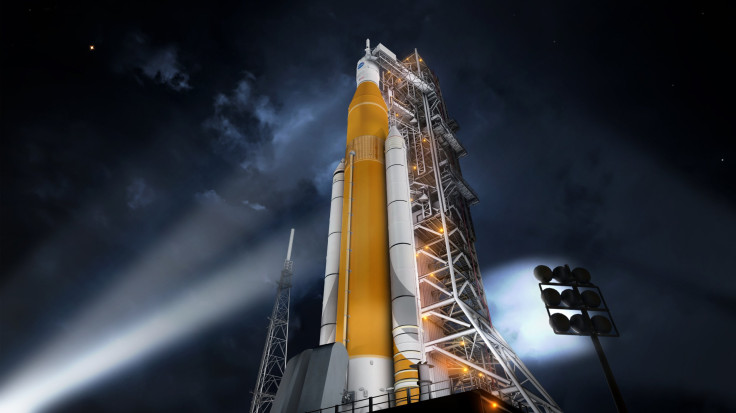NASA's Most Powerful Rocket Ever Passes Critical Test In Journey To Mars

Before sending astronauts to Mars, NASA needs a rocket powerful enough to launch the crew to the red planet. The Space Launch System (SLS) passed a critical design review Thursday, becoming the first rocket since the Saturn V to pass such a test.
The SLS was designed to be NASA's most powerful rocket ever ahead of the journey to Mars. The SLS will also power deep space exploration launches. "There have been challenges, and there will be more ahead, but this review gives us confidence that we are on the right track for the first flight of SLS and using it to extend permanent human presence into deep space," Bill Hill, deputy associate administrator of NASA’s Exploration Systems Development Division, said in a statement.
The rocket has three different configurations -- Block 1, Block 1B and Block 2 -- that will launch astronauts to the moon and beyond. A Block 1 configuration of the SLS can be used for travel to the moon and is capable of at least a 77-ton lift capability. "The initial Block 1 configuration of SLS will stand 322 feet tall, higher than the Statue of Liberty, and weigh 5.75 million pounds fueled. It will produce 8.8 million pounds of thrust at liftoff, equivalent to more than 160,000 Corvette engines," NASA wrote in its description of the initial configuration. The Block 1 configuration will have 15 percent more thrust than the Saturn V rocket that was responsible for launching astronauts to the moon as part of the Apollo missions. Block 1B can launch astronauts beyond the moon and the Block 2 configuration will be used in the journey to Mars.
Thursday's critical design review analyzed the SLS Block 1 configuration. As part of the review, 13 teams of NASA senior engineers and experts analyzed SLS documents and data in July. The results of the review were announced in October. The next phase of the SLS development is design certification in 2017 followed by the flight readiness review in 2018. Individual components of the rocket will undergo their own reviews.
Exploration Mission-1, slated for 2018, will launch from the Kennedy Space Center. The SLS will carry an unmanned Orion 30,000 miles farther than Distant Retrograde Orbit for a total journey of 275,000 miles.
© Copyright IBTimes 2024. All rights reserved.






















